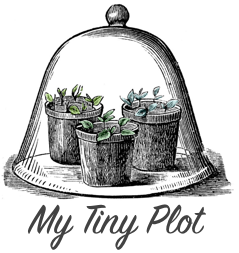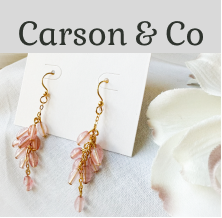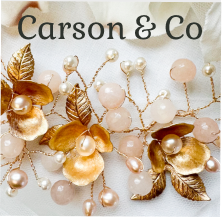Pros and Cons of Box as Garden Edging

I planted some Box around one of my vegetable beds in April last year. It was really a test to see what it would look like and how I could manage it. If all went well then I would consider putting edging around the other beds to make it a feature of the garden.
I find that vegetable gardens can become a little stark in the Winter when nothing is growing and box edging was traditionally used to create interest all year round and to keep the soil from leeching out of the beds during the rainy season.
Well, a year on and overall I’m happy with it. The best thing about it is that it is green all year round. And in Spring it puts on a growth spurt and sends out wonderfully, fresh, floppy new growth. It’s also a great little barrier to keep boisterous boys off my Lettuce. I think the Box edging has saved many a seedling. The other good thing (which may also be a bad thing) is that it grows very quickly. In just one year the bushes have closed ranks and now form almost a solid barrier.
Now the downsides – and there are some. The bushes harbour snails and slugs. They sit inside the bushes and wait for it to rain, then at night when I’m asleep they come out and eat my seedlings. It got so bad that I resorted to scattering slug pellets through the branches into the middle of the bushes. I don’t normally use pellets but this seemed like a neat way to get rid of my nemeses without exposing everyone to slug pellets. It worked.
The other downside is that I have to trim the bushes to keep them neat and then I have to brush up the clippings because if you don’t they just sit there, looking green, forever.
So, in short, I can see why the Victorian head kitchen gardener loved his Box bushes. I can also see why you’d need an army of men to trim them.
 My Tiny Plot
My Tiny Plot



It does look pretty, I had a similar problem with my strawberry plants, my friend told me to put them in hanging baskets as slugs etc cant get to them there, but I aslo thought about spreading salt as opposed to the pellets, what do you think?
You can get organic slug repellants to sprinkle around crops, they are more of a barrier & won’t harm anything that eats the slugs. Or try beer traps.
If you sprinkle salt on your soil it will not only kill the slugs, but all the plants as well!
As to the pros and cons of box I miss the biggest con: there is a disease, a fungus, in all boxes whcih we can’t get rid off.
Actually there are two fungi teaming up together: Cylindrocladium buxicola en Volutella buxi
I visit many many gardens yearly, there is not a garden I visited the last 2 years who does not have the disease. As it really affects the structure of many gardens (and our kitchen garden that has 4 prominent box compartments) I have done research on the subject and the fungi are throughout western Europe. Unfortunately this includes the UK. Do read http://apps.rhs.org.uk/advicesearch/profile.aspx?pid=96.
I would strongly advice against using box. What happens is that you platn them, you get attached to them when they grow nice, and then the problems start. Your nice and straight box starts to get holes and to look “wobbly”. Many cures are adviced, all of them very poisonous (no way you want to use them in general, but especially ntot in your kitchen garden) – and none of them seem to work.
So what to do once you got a warm heart for box? Don’t use it. There are alternatives. One of them is ilex, another alternative used is lonicera.
The full list of alternatives is also mentioned in the above pasge on blight from the RHS.
One last advice: don’t wait untill it occurs, get rid of your box now and use an alternative so you still can “gain”from this year’s growth.
… and a small comment on slug pellets: I am not sure of spreading them in the box. What I can advise is: use a length of pipe (the plastic one which you use for your sink/..), close one side with cork or something like it (eg plastic, taped) and put slug pellets in the pipe. put this under the hedge fromthe inside, every other meter or so.. Pellets will not disappear after rain and will last a long time, and are more out of sight this way.
I am using nemaslug (slug eating nematodes that live in the soil) this year (2 or 3 treatments a year) and so far I’m extremely happy with the results, with markedly fewer slugs and snails – and markedly less seedling damage. Only feasible for a smallish area though.
(Am also trying the nematodes against vine weevil, since I have a lot of stuff in pots).
Box edging was one of Jekka McVicar’s recommendations for protecting beds from boisterous children at a recent workshop I attended. I was concerned that they might take nutrients from the soil that the crops need but she confirmed that box is not a hungry feeder so works well as an edging plant. She never mentioned the slugs though … !
My wife Jenny and I have thought about box hedging around our vegetable garden but was thinking it might get high enough to block some of the direct sunlight our veggies need early in the season.
We don’t have a problem with the view in the winter months as that area is usually covered with a few feet of the white stuff.
I was seriously thinking about it until I got to the part about more slugs.
I don’t think this is for us. Maybe we will build a cute little picket fence around the garden. That’s keep the kids out and maybe even that dog that keeps running through our yard.
Great post. Box hedging is one of those classic types of garden edges that pretty much looks great everywhere. I have been doing commercial and residential gardening for some time now and we have used box (Buxus) hedging soooo many times over the years. It really does look good on any property old and new and people always love them once they are in. On top of that they are easy for people to maintain due to their small size.